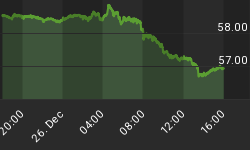It is true that there were disturbing parallels between the US economy of the 1990s and that of the 1980s Japanese economy. It is equally true that the same parallels always exist between economies that are undergoing or have undergone a credit boom, which is what happened in the US.
This is because credit expansion is the key factor that tends to be overlooked. Instead we get economic commentators examining the CPI (a grossly misleading indicator that they think actually measures inflation), budget deficits, productivity, current account deficits (which have to be treated with care), unemployment rates, etc. - but rarely credit expansion.
That our commentators - especially in Australia - have no understanding of the fact that booms are created by the banking system expanding credit is highlighted by their insistence that consumer spending drives the economy. Yet the same commentators gravely warn of the dangers of consumer debt. That the two phenomena are indissolubly linked completely eludes them. And this brings us to our first and very dangerous fallacy - that consumer spending drives the economy. In reality, entrepreneurship drives the economy while savings, i.e., investment, fuels it.
America has an abundance of entrepreneurship. So what happened during the 1990s? Simple. The Fed forced interest rates below their true market clearing rates. This threw out of kilter the coordinating function that interest plays in equating the supply of capital goods with the demand for them.
This means that the physical and time dimensions of America's capital structure were heavily distorted. One of the results of which was that companies at the higher levels of production had to draw on credit to fund investments for which there were insufficient genuine savings. In the meantime, factors, especially labour, had to be paid. As all factor payments resolve themselves into incomes of one kind or another, this boosted consumer spending. Presto! The economy found itself in a boom apparently driven by consumer spending.
As the consumer boom built up steam, firms at the higher stages found themselves under increasing cost pressures as demand for their products fell while production costs rose and more and more resources were bid away by rising consumer demand. Not surprisingly, the profits of these companies slumped.
This analysis would lead one to expect that prices along the structure would not only fall but that the greater the distance of production from consumption the steeper the fall would be. That is exactly what happened. This situation should have signalled to commentators that the boom was closing and that the boom in consumer spending was not part of the cure but part of the disease.
Artificially lowering rates encourages masses of people to borrow against their rising nominal incomes in the belief that the good times are here to stay. Needless to say, this borrowing fuels further consumption which puts even greater pressure on those higher up the production structure. Not surprisingly demand for expensive durables like cars and houses rose significantly. For example, retails sales rose in the first quarter of 1999 at an annualised rate of 15 per cent with car sales rising by 13 per cent.
Therefore the Fed's 'cheap money' policy riddled the American economy with unsustainable debts that resulted in a lot of painful liquidations.
Another economic warning was the rise in mergers, a phenomenon that leftists always misinterpret. 'Cheap' credit tends to inflate the ratio of the prices of companies' equities to their net worth. This in turn stimulates take-over activity which in turn is funded by - you guessed it - 'cheap' credit. Periods of hectic take-over activity are marked by rapid credit expansion: 1899-02, 1924-29 and the 1980s stand out in particular.
This is not to say every merger that occurs during a boom will fail, only that the inevitable correction can determine who the real dogs are. However, basically sound companies can still be brought down if their executives have engaged in excessive gearing. Once again, it is always a wait-and-see situation.
Has the same process been happening during the Bush presidency? I fear it has. By raising interest rates the fed has confessed that they had been forced below their market level. Unfortunately, the significance of this confession is lost on America's economic commentariat. Meanwhile, the dangerous fallacies that consumer spending drives an economy and that 'cheap money' policies actually create capital goods still prevail.
















